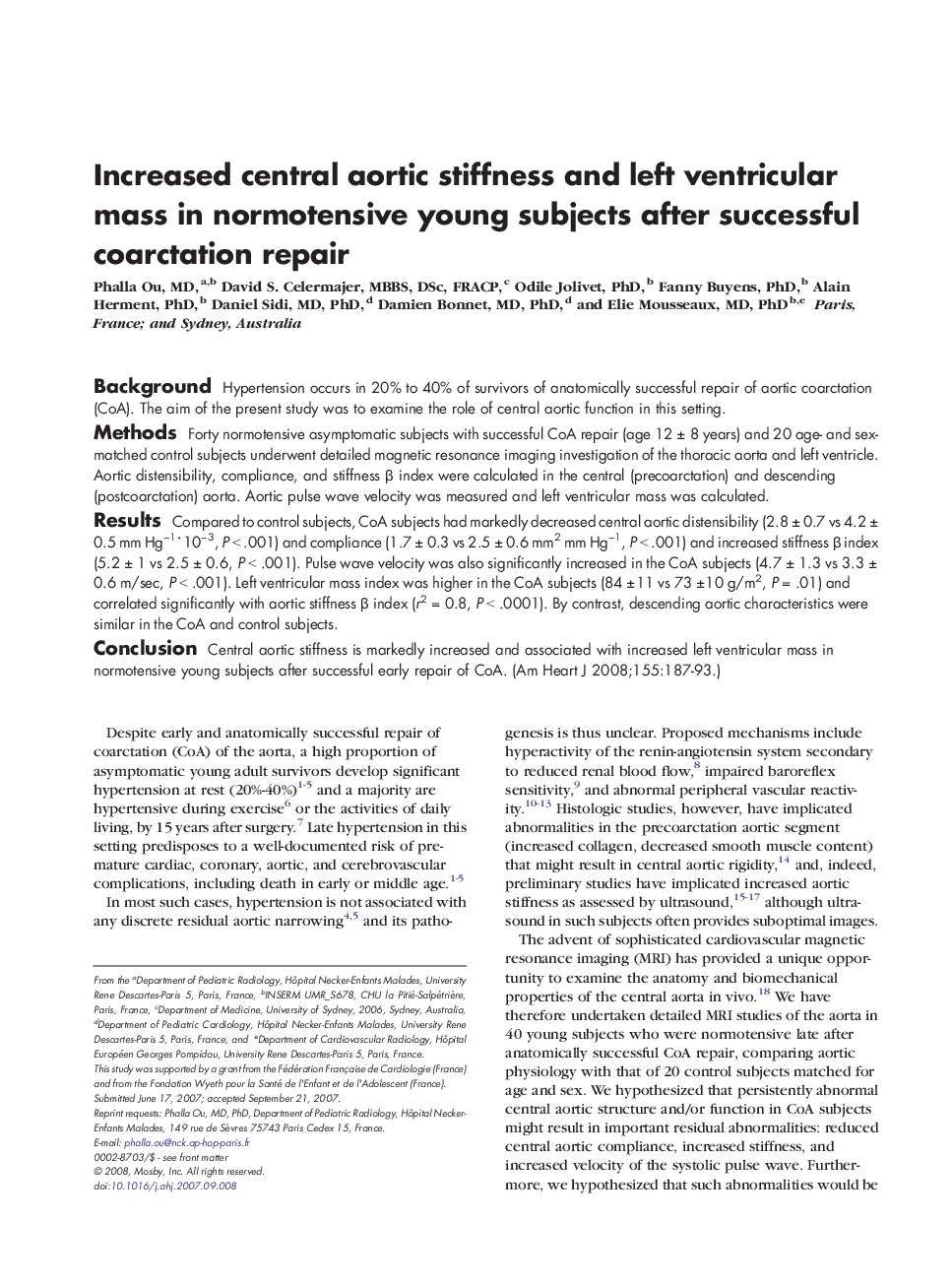| Article ID | Journal | Published Year | Pages | File Type |
|---|---|---|---|---|
| 2850968 | American Heart Journal | 2008 | 7 Pages |
BackgroundHypertension occurs in 20% to 40% of survivors of anatomically successful repair of aortic coarctation (CoA). The aim of the present study was to examine the role of central aortic function in this setting.MethodsForty normotensive asymptomatic subjects with successful CoA repair (age 12 ± 8 years) and 20 age- and sex-matched control subjects underwent detailed magnetic resonance imaging investigation of the thoracic aorta and left ventricle. Aortic distensibility, compliance, and stiffness β index were calculated in the central (precoarctation) and descending (postcoarctation) aorta. Aortic pulse wave velocity was measured and left ventricular mass was calculated.ResultsCompared to control subjects, CoA subjects had markedly decreased central aortic distensibility (2.8 ± 0.7 vs 4.2 ± 0.5 mm Hg−1·10−3, P < .001) and compliance (1.7 ± 0.3 vs 2.5 ± 0.6 mm2 mm Hg−1, P < .001) and increased stiffness β index (5.2 ± 1 vs 2.5 ± 0.6, P < .001). Pulse wave velocity was also significantly increased in the CoA subjects (4.7 ± 1.3 vs 3.3 ± 0.6 m/sec, P < .001). Left ventricular mass index was higher in the CoA subjects (84 ±11 vs 73 ±10 g/m2, P = .01) and correlated significantly with aortic stiffness β index (r2 = 0.8, P < .0001). By contrast, descending aortic characteristics were similar in the CoA and control subjects.ConclusionCentral aortic stiffness is markedly increased and associated with increased left ventricular mass in normotensive young subjects after successful early repair of CoA.
